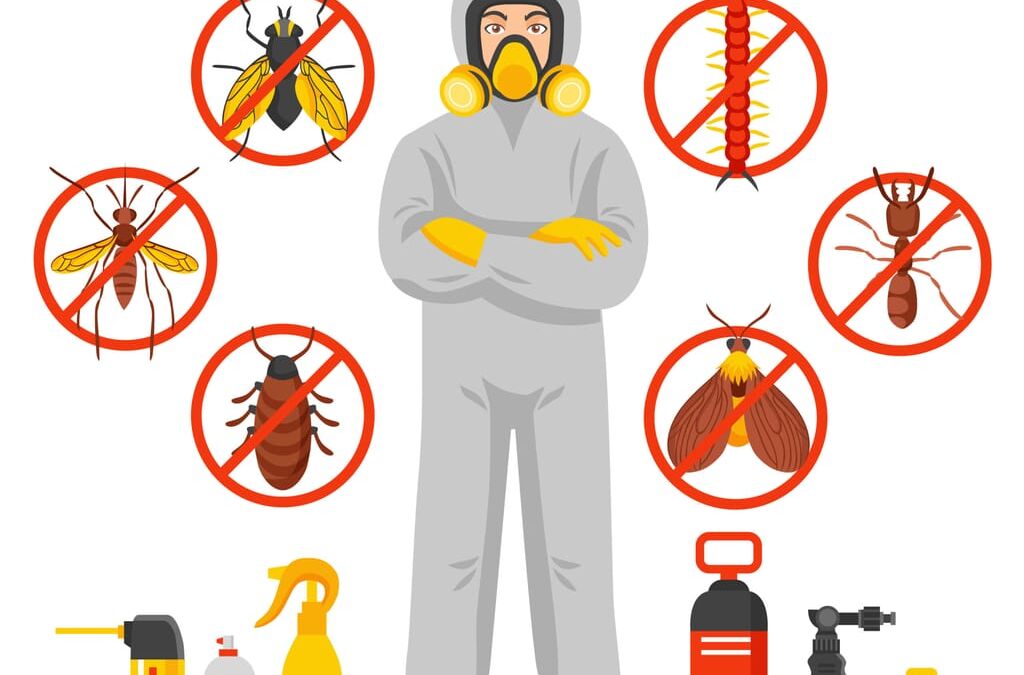Safe and Reputable Parasite Control for Lasting Protection
Efficient pest management needs a multifaceted technique that stabilizes eco-friendly stability with the demand for reliable bug reductions. The nuances of these approaches may not be instantly clear, triggering a closer examination of the methods that can lead to sustainable parasite control end results.
Comprehending Pest Control Methods
Bug control incorporates a range of methods aimed at managing and removing undesirable insects and rodents that can threaten both wellness and property. Understanding these methods is crucial for efficient parasite monitoring.
The primary classifications of bug control techniques include mechanical, biological, and chemical methods. Mechanical methods include physical barriers and catches to avoid parasite entrance and capture undesirable species. As an example, using displays on windows or employing sticky traps can substantially decrease parasite populations without presenting harmful substances.

Chemical pest control is commonly one of the most identified technique, using pesticides to get rid of pests. These chemicals can be effective but need to be utilized with caution to prevent adverse impacts on non-target species and the setting.
Advantages of Eco-Friendly Solutions
Exactly how can green services transform insect control practices? The fostering of eco-friendly insect control approaches uses countless benefits, significantly enhancing the efficiency and safety of insect management (exterminator coquitlam). First of all, these options utilize natural ingredients, minimizing the dependence on dangerous chemicals that can position risks to human health and the setting. This shift not only shields pets and family members but likewise lessens the potential for dirt and water contamination.

One more advantage is the positive effect on neighborhood biodiversity. Eco-friendly options are created to target particular insects while preserving useful bugs and wild animals, promoting a balanced community. This strategy straightens with the growing consumer need for lasting methods, improving the credibility of bug control service providers.
Integrated Bug Management Approaches
The execution of eco-friendly services naturally brings about the fostering of Integrated Bug Administration (IPM) strategies, which better enhance bug control efficacy. IPM is a holistic approach that integrates several methods to take care of pest populaces while lessening environmental influence. This strategy emphasizes using organic, cultural, mechanical, and chemical controls, guaranteeing a lasting and well balanced approach of parasite administration.
One fundamental facet of IPM is the detailed evaluation of pest task and environmental conditions. By checking pest populaces and determining their life cycles, professionals can apply targeted interventions that disrupt the insect's habitat or lifecycle, minimizing dependence on chemical pesticides. Additionally, social practices such as plant turning and environment control can dramatically decrease pest facility and reproduction.
An additional crucial component is using biological control agents, such as advantageous insects or microbes, which can naturally subdue insect populaces. When chemical applications are necessary, IPM focuses on making use of low-risk chemicals and applies them uniquely, minimizing exposure to non-target organisms and human beings.
Including IPM strategies not just improves insect control efficiency however additionally advertises a safer ecological community, lining up with the growing demand for lasting methods in parasite management.
Safe Practices for Homeowners
Comprehending the importance of safe methods in parasite control can encourage homeowners to properly take care of parasite issues while safeguarding their wellness and the atmosphere. Applying safe techniques and preventative procedures is vital in decreasing direct exposure to harmful chemicals.
Homeowners ought to initially analyze their atmosphere for problems that attract bugs, such as standing food, water, and clutter waste. Consistently cleaning and securing entry points can discourage insects from attacking the home. Making use of all-natural deterrents, such as important oils or diatomaceous earth, can offer reliable choices to chemical pesticides.
When chemical therapies are required, property owners ought to opt for items that are particularly identified as risk-free for residential use. It is necessary to comply with application guidelines thoroughly to stay clear of overexposure. Furthermore, using targeted therapies in locations where bugs are identified, rather than covering spraying, can significantly lower chemical use.
Lastly, keeping open communication with insect control professionals is crucial. Homeowners should make inquiries about the security of products made use of and demand environment-friendly choices whenever possible. By adopting these risk-free methods, property owners can produce a healthier living environment while efficiently handling parasite problems.

Tips for Long-Term Security
Developing an insect monitoring strategy that highlights long-lasting protection can substantially boost the efficiency of the risk-free methods formerly gone over. To attain this, home owners ought to apply regular evaluations of their residential property, focusing on hidden locations such as attics, basements, and crawl spaces. Early detection of bug activity is important in avoiding infestations from taking hold.
These practices minimize attractants that attract bugs right into more helpful hints the home. Sealing entrance points, such as fractures around windows and doors, can properly obstruct potential parasite accessibility.
Landscaping should also be taken into consideration; maintaining plants trimmed and maintaining a distance between greenery and the home go to this site reduces concealing places for parasites. Using all-natural deterrents, such as necessary oils or diatomaceous earth, can even more dissuade infestations without considering severe chemicals.
Lastly, teaming up with a professional parasite control solution for regular evaluations can offer an added layer of protection. These experts can offer tailored recommendations and advanced therapies, making certain that your home continues to be secured against insects in the long term.
Final Thought
To conclude, risk-free and dependable insect control requires a multifaceted technique that highlights eco-friendly methods and integrated bug administration. By implementing all-natural deterrents, carrying out routine examinations, and preserving proper cleanliness, building owners can significantly decrease parasite populations while securing beneficial pests and the atmosphere. Collaboration with professional bug control services boosts the effectiveness of these techniques, ensuring customized remedies that give lasting protection and comfort versus future infestations.
Effective bug administration needs a diverse method that balances eco-friendly stability with the need for reliable parasite reductions. The adoption of eco-friendly parasite control methods supplies various benefits, substantially enhancing the performance and security of pest management.The execution of eco-friendly services normally leads to the adoption of Integrated Parasite Monitoring (IPM) strategies, which further enhance bug control effectiveness. exterminator coquitlam. By keeping an eye on bug populations and recognizing their life cycles, experts can learn this here now implement targeted treatments that interfere with the bug's environment or lifecycle, reducing dependence on chemical pesticides.In verdict, reliable and risk-free bug control requires a multifaceted method that emphasizes environment-friendly methods and integrated bug monitoring